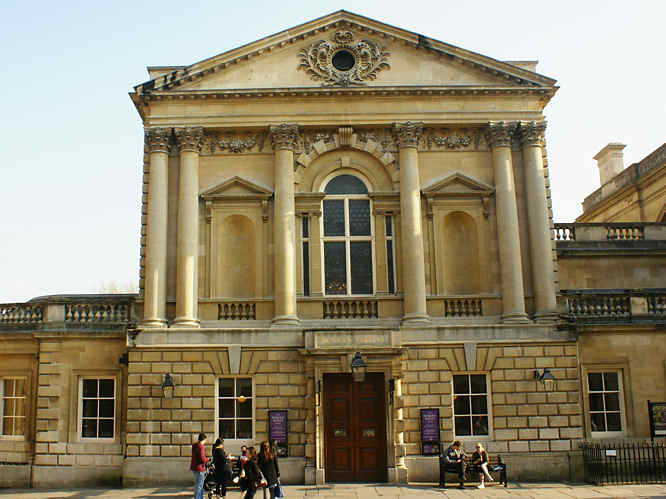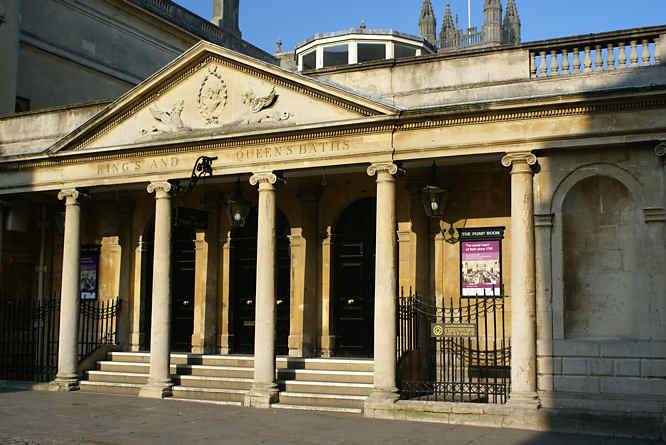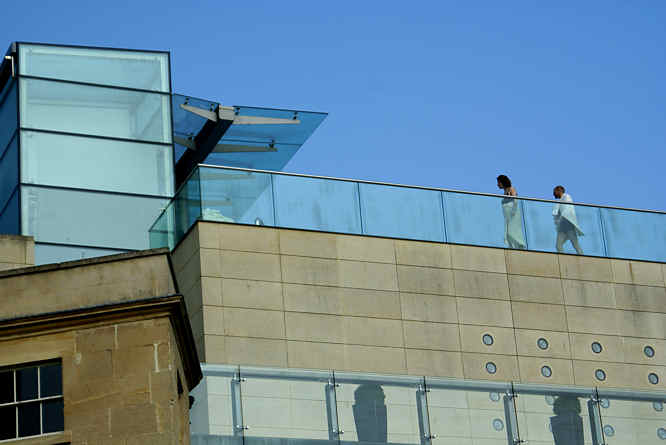Bath - The Roman Baths and Pump Room
The Roman Baths are the most famous tourist attraction in the city of Bath. Only the bath and the archaeological finds are roman. The exterior building was built during the Victorian period in a neo-classical style.

There is a discounted joint ticket that not only covers the Roman baths but gives you access to Georgian High Society preserved Assembly rooms and the history of Fashion Museum. I would recommend you take this option even if you are butch rugby playing male.
I thoroughly enjoyed visiting the Assembly rooms and the Fashion Museum. There are some fascinating exhibits. Access to the Rump Room is free. A free audio guide is part of the ticket. If you can try to catch one of the live guided tours near the main bath as I found them much more entertaining than listening to the audio guide.
They are included in the entrance fee. The complex is split into 4 sections; the sacred spring, the Roman Temple, the Roman Bath House and finds from the Roman Baths. Allow plenty of time for your visit as there is a lot to see.

As far back as 5,000 BC people have been people have been hunting near the hot spring. Worked flint tools have been found by Archaeologists. Iron age people worshiped the pagan water god Sulis by throwing coins into the spring around 100 BC. Roman coins dating from 50 AD have been found. From finds Archaeologists believe the Roman buildings collapsed about 500AD, 90 years after the roman legions left Britain. In 675AD a Saxon church is built near to the hot spring and in 1100AD after the Norman invasion the springs become a centre for healing again. The main baths were uncovered in 1880.
The main bath is surrounded by a roof top Terrace which is lined with statues of Roman Governors of Britain, Emperors and military leaders. Although they look old they are quite new dating from 1894. The were commissioned for the grand opening of the Roman Baths in 1897. The view from the Terrace is the first glimpse visitors get of the baths. What you are seeing is only a quarter of the whole complex. What you see above ground is not what you get. There is a lot more to the place. It extends under the modern ground level, beneath adjacent squares and streets.
The hot spring water produces 1,170,000 litres (240,000 gallons) every day and it's temperature is 460C. The Iron and Bronze age Celtic tribes, as well as the Romans, could not understand this natural phenomenon and believed it to be the work of the gods. They considered the spring to be sacred and made offerings to keep the gods happy. 12,000 Roman coins that had been thrown into the water have been retrieved from the bath complex. The In Roman times a great Temple was built next to the Spring dedicated to the goddess Sulis Minerva, a god with healing powers.

As you walk around the Roman Baths Museum look out for the fearsome head carved in Bath stone called the Gorgons head and is a powerful symbol of the goddess Sulis Minerva. The Roman bath-house attracted visitors from across the Roman Empire. The Victorians built the outside of the Roman Bath complex in the classical style I was amazed that the Roman plumbing and drainage system is still in place. It just shows you how good the Roman engineers were.
Nearly 2000 year old Lead pipes still carry hot spa water around the site using gravity flow. The main Roman bath is a pool is lined with 45 sheets of lead to keep it watertight. It is 1.6 metres deep. There are steps leading down on all sides. Around the bath you will see niches. These would have held benches for bathers. Some historians believe there would also have been small tables for drinks or snacks.
During the peak season you may be luck to see costumed characters wondering around the baths mixing with the visitors. The museum has been upgraded with the use of IT. I love the way they have used over head TV screens to show you a picture of the ruins you are looking at and then the screen changes to show you what it would have looked like in 100AD. It helps you interpret what you are seeing. You also walk through the remains of the hot room with under floor hypocaust heating, the cold room, the changing rooms and a cold circular plunge pool.
The Bath Pump Room
For over two hundred years, the Pump Room was the social heart of Bath. In Georgian and Victorian times the elite of high society would rent or buy a house in Bath and 'take the waters'. It was the in thing to do. Bath was a known for its good quality shopping, accommodation, activities and entertainment.
This is where people went to see others and be seen. It has a striking neo-classical exterior and interior. It is used as a location for many period costume drama films and TV shows. It is free to enter. You can try the hot Spa water at the fountain in the Pump Room. It has a rather unusual taste. It contains 43 minerals. One sip was enough for me but the tea and cakes were delightful if a bit expensive.
Book your accommodation in Bath with Amazon.co.uk Destinations

Click here to find accommodation in Bath